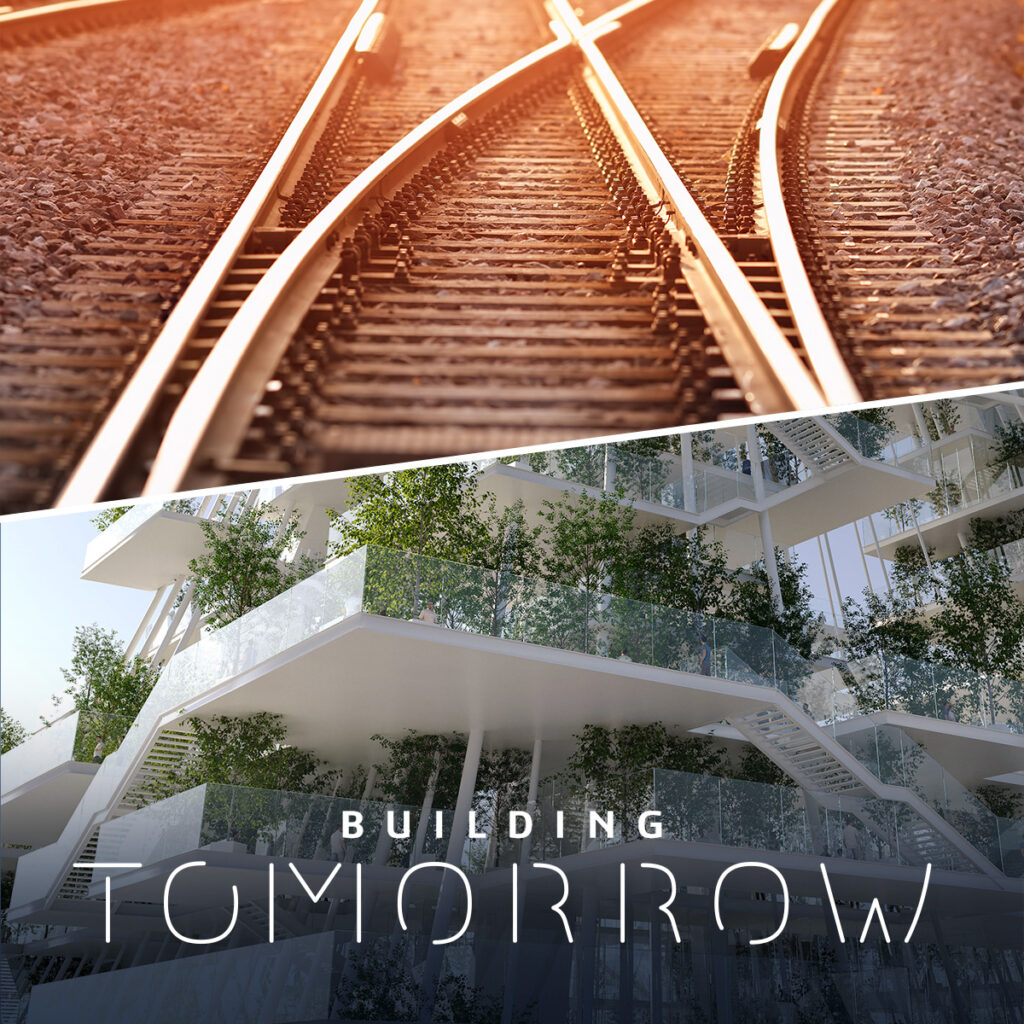By 2050, there will be nearly 10 billion people in the world. These people must be housed; and this housing must be safe, affordable – and increasingly, sustainable. A whole new generation of innovative construction approaches are needed.
This was the mission that lay at the heart of our Building Tomorrow project, which you can explore in full here. Across the project, Dassault Systèmes teams sought to demonstrate how virtual solutions can allow us to totally transform how we collaborate on, design, and operate buildings with carbon neutrality in mind – even the very biggest structures.
Like the Eiffel Tower, for example.
This doesn’t just mean thinking about new construction methods, but also how things actually run on the ground – logistics. That’s because the logistics function is the critical nerve center of a project, and needs to be monitored, understood, and optimized from the very beginning if a sustainable future for construction is to be realized.
Logistics: the challenge for sustainable construction
Constructing even a small building involves significant logistical challenges. Materials and modules come in a raft of shapes, sizes, and weights; can be made by multiple manufacturers; and can take many different transport routes to the work site.
Integrating all these elements in a single vision and making sure they arrive on site exactly when needed is a considerable challenge. For the new tower project, making sure everything was tracked and understood from a sustainable logistics standpoint from day one was essential.
To do this, the designers turned to using Life Cycle Assessment (LCA) tools. These allowed the various stakeholders on the new tower project to apply supply chain analytics solutions and quantify environmental impacts across the product lifecycle, from sourcing raw materials to delivering finished goods and construction modules. This approach allowed for the creation of different what-if scenarios, from which teams would be able to select an optimal strategy, with minimal environmental impact.
The team used the 3DEXPERIENCE® platform as the central point for all their smart logistics designs. By providing a single source of truth, the different stakeholders could communicate freely with each other, from architects to manufacturers to contractors. The platform enabled the team to more effectively plan how materials and labor would move through the project in a timely manner.
It is thanks to the power of holistic visibility that all project KPIs – be they around cost, timelines, or sustainability – would be able to be tracked and met. By creating a real-time, virtual twin of the tower project, the latest information can be inputted, and logistical decisions modified to maximize efficiency and minimize the carbon footprint.
For any given logistics project, some options are cleaner than others. Transporting by rail, for example, could turn out to be less emissions-intensive than transporting by road. But even if this is the case, can you be sure rail gets you your materials on time and within budget? And then, how do you coordinate this between all your logistics chains, across the entirety of the project? Simulation allows for this kind of route optimization.
Supply chain resiliency: the heart of smart logistics
Smart logistics doesn’t just mean lower emissions – it means more disruption-resistant operations. There’s an old saying in military strategy – “no plan survives contact with the enemy”. Or, as Mike Tyson more simply put it, “everyone has a plan until they get punched in the face”. That punch might come in the form of infrastructure failure, or industrial action, or just traffic accidents. Whatever it is, disruption is a fact of life for logistics planners.
But thanks to the virtual twin – which updates continuously and automatically – stakeholders can act rapidly when choosing alternative logistical arrangements. With this information, they can look at their alternative options and their potential impact on sustainability KPIs, as well as delivery and cost expectations. The subsequent choices can then be easily communicated throughout the project. All this makes for more agile and more resilient construction operations.
In the video below, I detail how the 3DEXPERIENCE® platform enables early optimization of logistics across the entire supply chain, reducing its overall carbon footprint and making it more resilient to disruption.
The transformative power of digitalization
As the world grows more complex, stakeholders are looking for new ways of working together to deliver ever more sophisticated projects more sustainably, and to higher degrees of customer satisfaction.
This means establishing a comprehensive view of logistics operations, while ensuring a seamless and synchronized daily flows, optimizing resource utilization and building circular economy initiatives.
As the Building Tomorrow project demonstrates, digitalization can give teams an incredible way to understand and simplify these challenges, providing full visibility to logistics operators, empowering them to make the best decisions, avoiding materials waste while maximizing efficiency. Whether that’s in the middle of Paris, or anywhere else in the world digital solutions offer truly transformative power.
Discover more about the Building Tomorrow project here:


